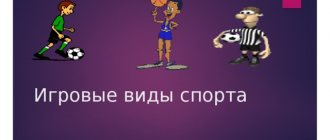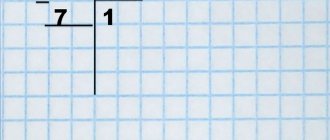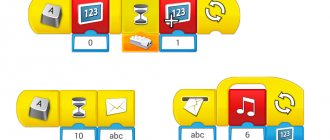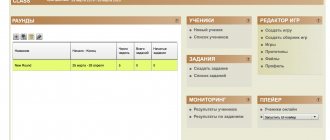Algorithm for developing a math subject lesson
WHAT SHOULD A MODERN METASUBJECT LESSON BE? A modern lesson should provide qualitatively different results than a traditional one. First of all, we are talking about the formation of meta-subject skills. Some methodological recommendations in this regard.
Algorithm for developing a meta-subject lesson
Determine the educational sector in which the occupation is expected. Formulate the topic of the lesson.
Formulate a hierarchy of lesson goals: subject, meta-subject, methodological (organizational).
List the fundamental educational objects (objects) in the direction of which students’ activities are planned.
Based on your ideas about the characteristics of the students in the class, list what types of abilities you expect to use (or identify). If necessary, divide the selected abilities into groups, for example: general academic and partial; or - creative, cognitive and organizational.
Suggest how you will ensure that students are goal-oriented in class.
The core of a creative meta-subject lesson is the educational situation:
Formulate one or more key problems with which students will be willing and able to express themselves. The problem or topic should be something that “ignites” and be of a meta-subject nature.
Formulate a task for students at each stage of the lesson. For a creative lesson, tasks are set in such a way that they allow for various options for their implementation, for example: “Draw your picture of the world.”
Name a specific educational product that the students (your chosen student) will have to create during the lesson. The product must be specific, but without content visible to you. For example, students will construct a table for dividing numbers, but you don’t know what it will end up like.
What cultural and historical analogues will be offered to students on the problem under consideration.
How do you intend to ensure that the student reflects on his or her activities (a specific method, or technique, or tasks).
How do you propose to diagnose the external and internal educational product of a student? Will a system for assessing student performance be used, if so, which one, if not, then why.
How and by what criteria do you intend to evaluate the success of this lesson.
Structural elements of a meta-lesson
The mobilizing stage is the inclusion of students in active intellectual activity.
Goal setting is the formulation by students of the lesson goals according to the scheme: remember - learn - be able to.
The moment students realize the insufficiency of their existing knowledge and skills. Communication.
Mutual verification and mutual control.
Reflection is the student’s awareness and reproduction in speech of what he learned and how he acted. Requirements for tasks in the lesson
Increased level of complexity, problematic and exploratory nature.
Assignments should presuppose the need for a comprehensive application of the knowledge and skills that the student possesses and stimulate his development of new ways of thinking.
To learn how to properly organize and stage classes based on a meta-subject approach, a teacher must learn:
- reasons and conditions for the emergence of the idea of a meta-subject approach in teaching;
- components of meta-subject content in teaching;
- the content of the term “universal learning activities”;
- differences in approaches to organizing a traditional lesson and a lesson built on the principle of meta-subject;
- levels of students’ actions in a “meta-subject” lesson;
- stages of constructing a lesson scenario that implements a meta-subject approach;
- the concept of reflection as an educational activity;
- requirements of state standards for meta-subject results of mastering the main educational program.
It can be considered that innovative processes in modern education are the result of the development of a new educational paradigm, which expresses the globalization processes of the modern world, in which local social sectors are increasingly beginning to integrate into the global sociocultural space of human civilization. Innovation processes, thus, become relevant and are the only sources of development of educational systems.
Thus, when starting work in schools to implement meta-subjects, it is necessary:
- clearly understand that state educational standards are a development, a continuation, and not a rejection. Therefore, it is necessary to make wider use of everything that has already been developed in schools;
- carefully study all documents on standards in order to plan the joint activities of all teachers of the educational institution;
- begin work on introducing state standards in primary and high schools today, because now this is done exclusively by primary schools;
- carry out not only the interaction of teachers within a separate educational institution, but also within the framework of network interaction;
- master new technologies, change the position of the teacher.
The most difficult thing for a teacher is to change his role, to become a moderator, tutor, motivator, to teach children to “learn.”
Algorithm. Properties. Recording methods. Linear algorithms. Sieve Roman 9 "A" class. - presentation
Algorithm. Properties. Recording methods. Linear algorithms. Sieve Romana 9 "A" class
The concept of an algorithm An algorithm is a strict and clear sequence of actions, the implementation of which leads to a certain result. Requirements for algorithms 1) Focus on a specific performer. 2) Understandability for the performer (the algorithm is compiled in accordance with the system of commands of the performer). 3) Accuracy (each command must determine the unambiguous action of the performer). 4) Finiteness (the presence of the end of the algorithm after a finite number of steps). 5) Effectiveness (obtaining the desired result at the end of the algorithm). 6) Mass availability (applicability for a wide class of tasks). 7) Formality of execution (during the execution of the algorithm, the performer should not think about the essence of the actions being performed).
Methods of writing algorithms Verbal Recording in an algorithmic language Flowchart (Graphical representation of the algorithm) Program (writing an algorithm in a programming language)
Verbal recording method (description of the algorithm using Russian words). Example. Algorithm for turning on a computer. - Go to the computer. – Turn on the monitor. – Turn on the system unit. Assignment: come up with your own example. Write it down
Recording in an algorithmic language Example. An algorithm for finding the maximum of two entered numbers. Start Enter the number x Enter the number y If x>y Then Output x Otherwise Output y All End
Flowchart (Graphical representation of an algorithm) Flowcharts are one of the graphical ways of representing algorithms. A block diagram consists of blocks connected by lines. The following types of blocks are most often used: - performing an operation; — choosing the direction of execution of the algorithm depending on the fulfillment of the condition; — data input/output; — the beginning and end of the algorithm.
Program (recording an algorithm in a programming language) Example. Determines the parity of the entered number. In BASIC: INPUT Enter an integer; XA$=even IF X MOD 20 THEN A$=not+A$ PRINT Entered number, A$
Types of algorithmic structures Linear Branching Loop
Linear algorithms A set of instructions executed sequentially in time, one after another. Block diagram of the basic design follows. enter exit
Linear algorithms Verbal description. Based on the culinary recipe for making a nut drink, create a verbal algorithm. Crush the nuts in a wooden mortar and dissolve in hot milk. Then cook for 10 minutes over low heat. Serve chilled. Products: 250 g peeled walnuts, 0.8 l. Milk, 120 g sugar. 1. Take 250 g of peeled walnuts. 2. Grind them in a wooden mortar. 3. Take 0.8 l. Milk. 4. Mix milk, sugar, nuts. 5. Cook for 10 minutes. 6. Cool. 7. Serve.
Linear algorithms Example: block diagram of an algorithm that, given two given real numbers, calculates the coefficients of a reduced quadratic equation. beginning X1, x2 p:=-x1-x2 q:=x1*x2 p, q end Given: x1, x2 Find: p, q Relationship: x 2 +px+q=0 p=-x1-x2 q=x1 *x2




